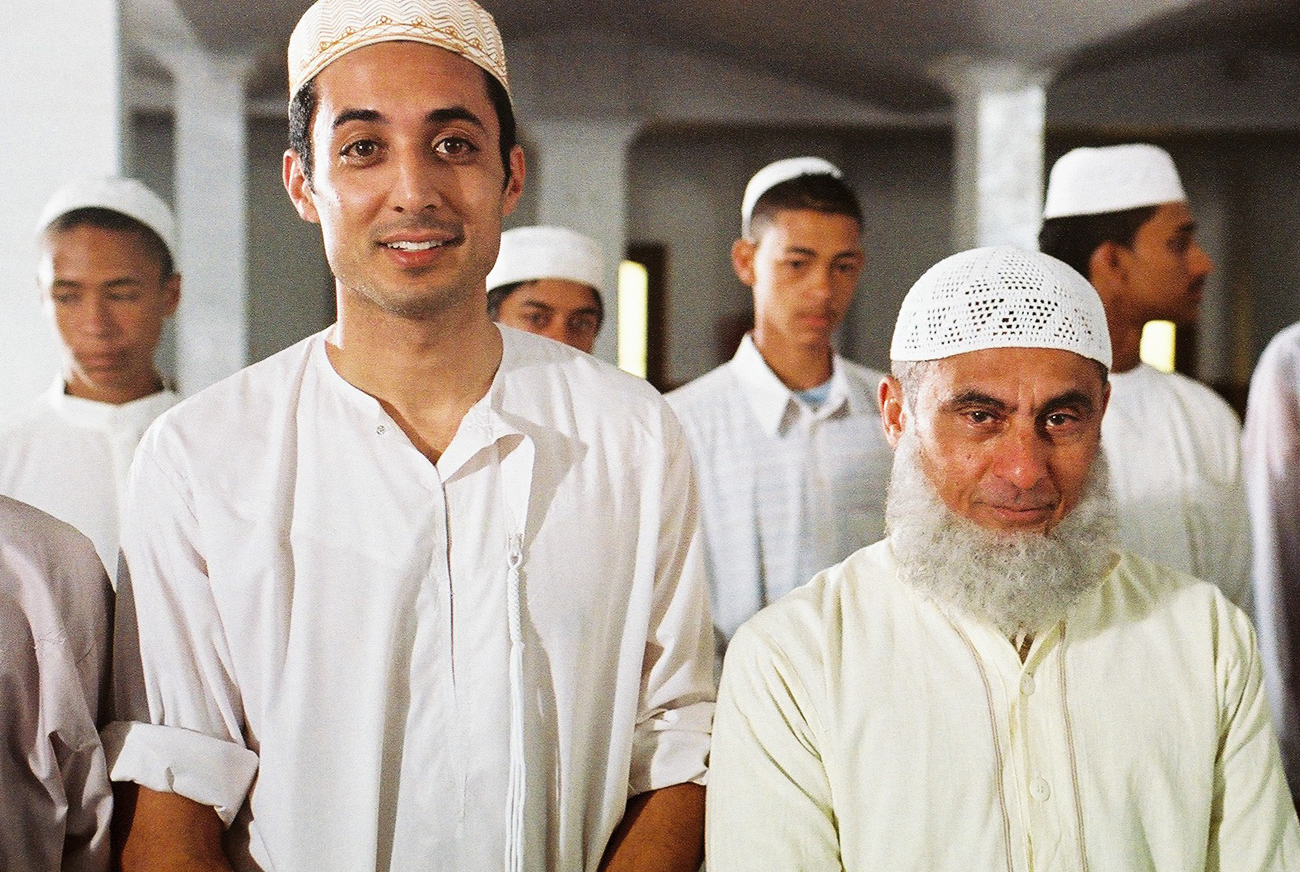How to make a movie about Muslims
The South African comedy drama, "Material," portrays Muslims and Islam without resorting to the regular comedic clichés and slapstick.

A still from "Material." Riaad Moosa, left, and Vincent Ebrahim.
These days, all the talk in the South African film world is about the comedy “Material.” The film, a comedy, stars Cape Town stand-up comedian Riaad Moosa as well as the actor, Vincent Ebrahim, from the popular BBC show “The Kumars at No. 42″. Material is also doing really well at the South African box office. I recently saw Material and I have to say it didn’t disappoint. Set in Fordsburg, a predominantly Indian neighborhood of Johannesburg, the film revolves around a young Muslim shopkeeper, Cassim Kaif (Moosa), on the cusp of taking over the family business upon the insistence of his father (played by Ebrahim). He struggles to honor his family’s needs and expectations while pursuing his dream of becoming a stand-up comedian. He slips out in the middle of the night and performs to mixed crowds in Johannesburg’s downtown bars; something which for his father is more than haram.
The film is based on some of Moosa’s own experiences with his family (he is a qualified doctor whose passion for comedy led him to hang up the stethoscope) as well as on stories that he and producer Ronnie Apteker had heard.
I found the film quite refreshing as Indian South Africans are often underrepresented in South African film, despite their crucial role in our society and history. There is a subtle yet poignant reference made in the film to the apartheid era Group Areas Act which led to forced removals of Johannesburg Indians from the racially mixed area of Fietas to create Fordsburg as an area for Indians. Within the global comedy context it is equally refreshing as the film is able to portray Muslims and Islam without resorting to the regular comedic clichés and slapstick. The film presents a much more nuanced view of what it means to be a Muslim and Indian in contemporary South Africa.
Writing for South African website, The Daily Maverick, local journalist Khadija Patel, argues that Material “lends historical significance through its storyline of conflict between Riaad Moosa’s father in the film, played by Vincent Ebrahim, and his brother. Their conflict was founded when shopkeepers from Fietas – one of the oldest communities in Johannesburg, and one of the first ‘locations’, or multi-racial areas established under the government of Paul Kruger in 1893 – were forcibly removed by the Group Areas Act.
Patel continues,
Until then, Fietas was an integrated community, not unlike District Six and Sophiatown. Many of the shopkeepers who lost their livelihoods in the move from Fietas to Lenasia, ended up at the Oriental Plaza, the shopping complex in the heart of Fordsburg, now famous for bargains, samoosas and a plurality of fabric stores. And the story of the film goes, Vincent Ebrahim’s character was affronted by the readiness of other shopkeepers to sell out to the apartheid government and go meekly to the Plaza. His brother however has no such qualms. And it is this richness in the story telling, the attention to historical detail that sets this film aside from other efforts to represent the Fordsburg community in all its beguiling eccentricity …
As a result, for Patel, this is “not a film about the backwardness of Muslims. It does not portray Muslims in an unforgiving light. Instead, it shows an aspect of Muslim life in South Africa rarely seen before. Away from the bombs of Baghdad and the schizophrenia of Pakistan, this is Johannesburg, South Africa, and this film reminds us that though Muslims are easily wound up into fits of self-righteousness, they are human too. They share the same physical space as other South Africans. They share the same experiences”
Writing in The Times, journalist Nikita Ramkissoon concluded that the main achievement of “Material” is that it is “raising the bar in Indian South African entertainment“:
I have had it up to my ears with Indian theatre and film perpetuating Indian stereotypes of the Lenasia or Chatsworth accent. The humor is generally tasteless, mindless and embarrassing. Our Indian heritage is so rich – full of life, color, history and wisdom. Our culture is beautiful and achievements plentiful. But Indian theatre … degrade Indians to the lowest common denominator. Then you have Bollywood theatre which portrays us as nothing more than a bunch of dancing models … ‘Material’ on the other hand, hit the right balance. The balance comes out in portraying the stereotypes we can laugh at, not through awkward clowning, but through the character Cassim’s clever comedy, as well as bringing up our apartheid-entrenched heritage and the culture/ identity crises young Indian South Africans face today. I want to see more of this, please. Telling our stories as normal films would. Not berating our stunning culture with curry-flavored fart jokes.
The film’s Facebook page, here, also contains a number of reactions. I highly recommend “Material.” Go see it if it makes it to a film festival close to you or gets onto a streaming service.



